Tijana Vujošević
Manchester University Press

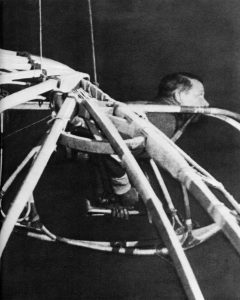
When and how do societies radically transform? What role does space play in constructing collective identity? How do societies harness space to integrate ideology and daily life for a new class of citizens that barely exists? Tijana Vujošević’s Modernism and the Making of the Soviet New Man probes these questions. The book examines the role of Russian revolutionary spatial projects in the formation of proletarian consciousness, primarily but not exclusively focusing on the interwar era. It proposes such projects as central to the Soviet identity-making enterprise. As anthropologist Caroline Humphrey has noted, the task of Soviet revolutionary architecture was “to build material foundations that would mold nothing less than a new society.”1 In other words, one of the revolution’s explicit goals was to use architecture to build the then-small industrial working class—and herein lies the essence of Vujošević’s research.
With its interdisciplinary scope, focus on identity formation, and exploration of a broad range of revolutionary spatial representations, Vujošević’s book can thus be seen as an important attempt to depart from a traditional architectural history. Drawing on Evgeny Dobrenko’s theory of Stalinism “as a society in which images and representations mediate all social and economic relations,”2 Vujošević offers multiple perspectives or, in her words, “deferments and anachronisms,” through which to view the fractured yet not-at-all random temporal and spatial shifts in the relationship between twentieth-century Soviet spatial representations and ideology (4). Structured to some extent like acts and scenes in a play, the book’s chapters examine vignette-like case studies of film, literature, poetry, theater, aeronautics, administrative classifications, and art as well as architecture, interior design, and furniture that, while not necessarily chronological, grow both in ideological intensity and scale. Beginning in Chapter One with drawings depicting imaginary flight into space in the early 1930s and culminating in Chapter Six with the monumental project, in the same decade, of the Moscow Metro, Vujošević moves back and forth in time to argue that, for the USSR, technology was the “means of transforming the mundane into the otherworldly,” or the ideal society (33).
In Chapter One, Vujošević argues that in the early Soviet revolutionary spatial project, quasi-mystical, cosmic thinking represented by the celestial sphere and exemplified by metaphors of flight set a foundation for imagining a new revolutionary individual. In Chapters Two and Three, the author argues that the metaphysical phase shifts to a productivist—“efficient and purposeful”—one, in which Vsevolod Meyerhold’s theater and various projects for minimal dwelling and furniture now create the identity of the socialist worker (92).
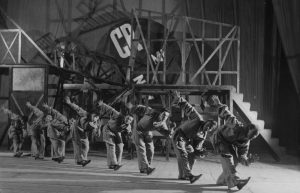
Indeed, Meyerhold’s mechanized, quasi-Taylorist actor-training regimens and the planning of minimal housing, are, Vujošević proposes, urgent tasks for the Soviet leadership in transforming the largely peasant population into an urban proletariat essential to the victory of the socialist project.3 In Chapter Four, Vujošević identifies a further shift, from the productivist ethos to a representational one, where she argues, following Dobrenko, that socialism takes on the status of a system of representation. Public baths are examined as collective “microcosms of the harmony and progress of the Soviet world”; in them, through collective corporeal immersion, “a ritual engagement with the building, the users learn to understand and appreciate this representation” (120).
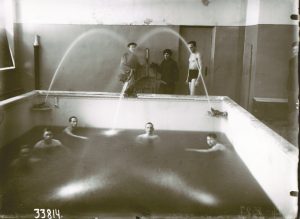
Chapter Five examines the role of revolutionary women in translating socialist realist aesthetics from the realm of painting to the intimate ones of the home and garden.
In Chapter Six, Vujošević presents the Moscow Metro as the very embodiment of socialist modernity and its propaganda publication, How We Built the Metro, as the ideological instrument aimed to transform Muscovites from “disorganized, peasant-like individuals into rational, efficient creatures of socialist urbanity” (162).
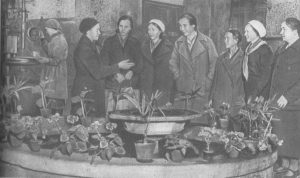
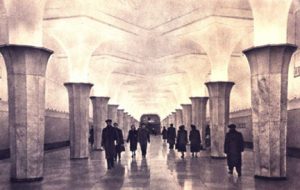
Such spatial and disciplinary breadth makes Modernism and the Making of the Soviet New Man an intriguing and valuable contribution to knowledge about Soviet architecture and culture. Yet despite this wide array, the importance to Soviet architectural and cultural history of its chosen case studies is not fully argued and their broad socioeconomic context is somewhat downplayed. In addition, comparisons and connections to other parts of Europe are somewhat underexplored. For example, similar mystical and productivist identity experiments occurred in Weimar Germany, including at the Bauhaus. Walter Gropius’s 1919 statement that “we float in space and cannot perceive the new order” resembles the forays into outer space discussed in Vujošević’s first chapter.4 Similarly, Meyerhold’s productivist “body-machine” has some parallels in Oskar Schlemmer’s Triadic Ballet and Figural Cabinet.
The book has limited references to original archival research, but when it does make such references, it successfully draws on material from major institutions such as the State Archive of the Russian Federation and the Russian State Archive of Literature. While its heavy use of then-contemporary revolutionary publications as secondary sources carries a certain danger of presenting as “reality” the same ideological forms placed under critical examination, it is also appropriate because the book focuses so explicitly on images and representations. Importantly, most of the secondary books and articles used in support of Vujošević’s critical analysis are authored by respected Soviet and Western scholars.5
Works Council for Art (Berlin: Arbeitsrat für Kunst, 1919), 32.
Some of Vujošević’s claims, such as architecture being the most radical USSR manifestation of modernism, seem a little optimistic. Despite the major transformation of the twentieth-century Soviet built environment, the limits of its economy and construction industry and significant state investment in mass media—including the very materials that Vujošević uses to support her argument—suggest caution. The rhetorical crescendo of the book, culminating in propaganda relating to the building of the Moscow Metro, compounds the problem. Vujošević presents the project as having an ideological reach far greater than its physical presence offer no evidence other than political speeches to demonstrate its impact across Soviet urban and rural society.
Nevertheless, Modernism and the Making of the Soviet New Man offers intriguing, original interpretations about the links between ideology, space, and the formation of class identity. An ambitious interdisciplinary investigation, it courageously explores a wide range of spatial and cultural forms, illustrated by a compelling range of images and texts. It also avoids the common trap of focusing only on the early revolutionary avant-garde period, instead spanning the full length of the Soviet revolutionary historical project, noting ideological connections and differences between the Bolshevik and Stalinist eras, with some discussion of Soviet identity even in the glasnost and perestroika years. The book is a useful addition to research on architecture and identity politics in the Soviet sphere and, provided archival access remains open in Russia and beyond, a helpful base for further study of Soviet revolutionary culture and architecture as well as totalitarian ideology. After all, as Joseph Stalin stated, “we must finally understand that of all the precious capital in the world, the most precious capital, the most decisive capital, is human beings.”6
Katerina Rüedi Ray is professor and was director from 2002 to 2017 of the Bowling Green State University School of Art. She was director of the University of Illinois at Chicago School of Architecture from 1997 to 2002. Her research connects modernism and education in art, design, and architecture to critical social theory, focusing on globalization within capitalist and communist spheres. Her individual and coauthored publications include Bauhaus Dream-house: Modernity and Globalization (2010); Marina City: Bertrand Goldberg’s Urban Vision (2010); Chicago Architecture: Histories, Revisions, Alternatives (2005); Desiring Practices: Architecture, Gender and the Interdisciplinary (1966); and numerous book chapters and articles.
How to Cite this Article: Ray, Katerina Ruedi. Review of Modernism and the Making of the Soviet New Man, by Tijana Vujoševic. JAE Online. February 20, 2019. http://www.jaeonline.org/articles/reviews-books/modernism-and-making-soviet-new-man#/.






